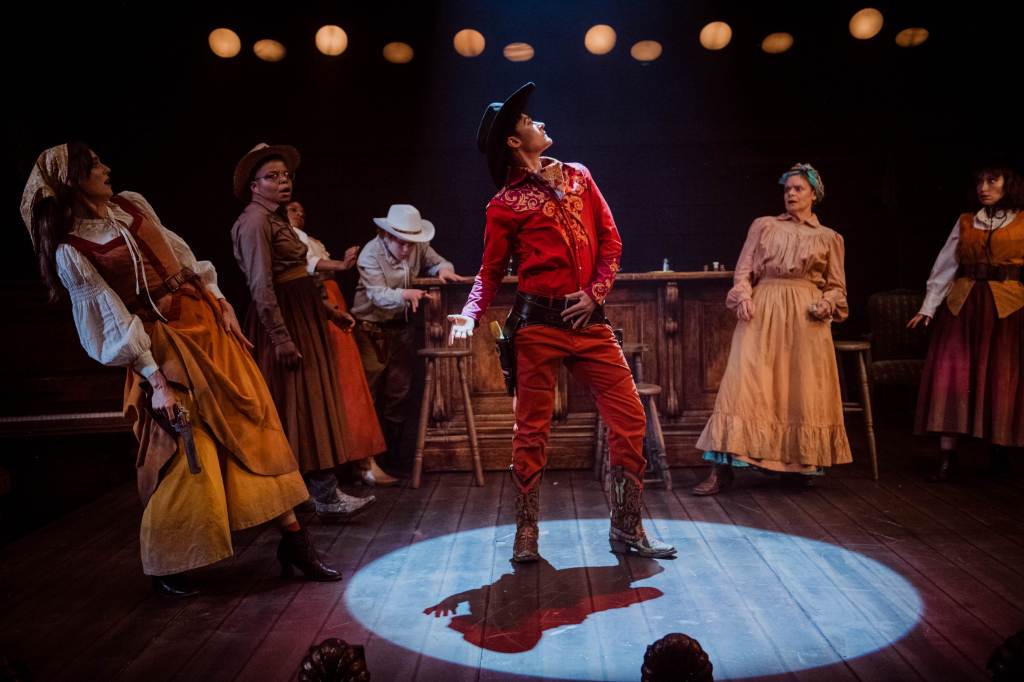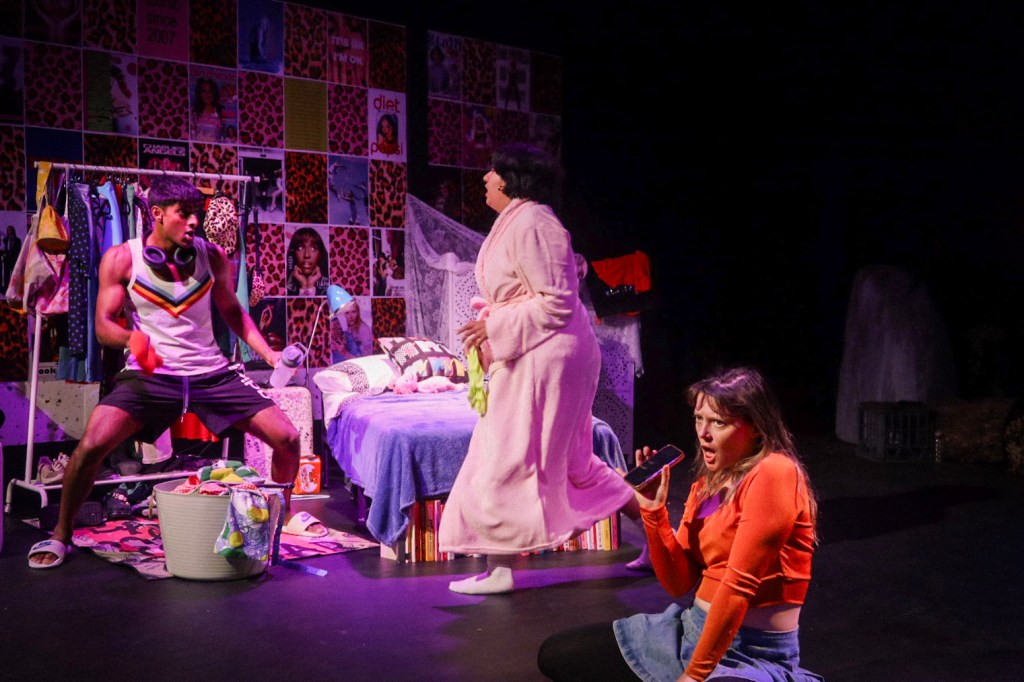
One of the many things that makes KXT an invaluable part of the Sydney theatre scene is their support of early career artists.
Directed by Monica Sayers, this is Trent Foo’s debut play. It tells the story of Heepa, who visits the underworld to enlist the aid of his ancestors to ensure his Paw Paw attends the family Christmas.
Despite this particularly Australian-Chinese setting, the piece deals with a universal theme: our relationship with those who came before us.
Heepa expresses a mix of feelings towards his grandmother: a rejection driven by his hunger for independence, a gratitude for all she’s done, and a regret that too often the first of these emotions has trumped the second. It’s a wild, heart-breaking, soul-making blend of feelings, a mix experienced by most of us, and it’s easy to imagine that the migrant experience only ramps up the intensity.
The whimsical conceit of the piece – that the protagonist speaks to his deceased ancestors – is the perfect vehicle for the exploration of what we owe family. (In contrast, the Christmas aspect of the piece is rather lightweight; the veneration of the dead taking precedence over the Christian myth. In fact, the Christian myth is given rather short shrift, reduced to the irrelevant Virgin birth and dismissed as ridiculous, no more worthy of attention than a laughable Chinese melodrama. For some audience members, however, the unspoken tension between the two spiritual traditions will be both provocative and thrilling. In contrast to the veneration of the dead, the Christian myth is about transcending our ancestors and shedding the common inheritance of selfish misery supposedly passed down from our forebears, Adam and Eve. Ultimately, it’s about new beginnings and looking forward. Add to that the conceit of the Divine choosing to enter the human world via a stable, the child of two nobodies, the birth witnessed by farm animals, and you have a tale that challenges all commonly accepted human values. Absurd simplification: you could place the two traditions, the veneration of the dead and the Christian myth, in stark contrast – one asserts the importance of connections, the other the importance of fresh starts. And a healthy spirituality requires both.)
Portraying Heepa, Foo has an easy stage presence, a charming, playful, natural manner that leans delightfully into the script’s use of the youthful vernacular. For the majority of the piece, the structure is amusingly loose, as Heepa shares anecdotes about his relationship with his Paw Paw. The finale is very moving (but the plot is dependent on the protagonist withholding information, and so the overall impact of the piece will be determined by whether you believe this reticence aligns psychologically with the way the earlier anecdotes are delivered.)
As Heepa’s Paw Paw, Tiang Lim beautifully combines comedy with dignity, playing with the grandma tropes of being overly demanding yet not openly affectionate, while at other times projecting a mature nobility, one that’s both inspiring and pathos-inducing.
Performing on traditional instruments, Jolin Jiang creates an accompaniment which is wonderfully evocative. As an actor, she creates a character of poignant mystery.
Paul Gilchrist
A Chinese Christmas by Trent Foo
Presented by FooFrame Productions in association with bAKEHOUSE Theatre Co,
At KXT on Broadway until Dec 20
Image by Robert Miniter








